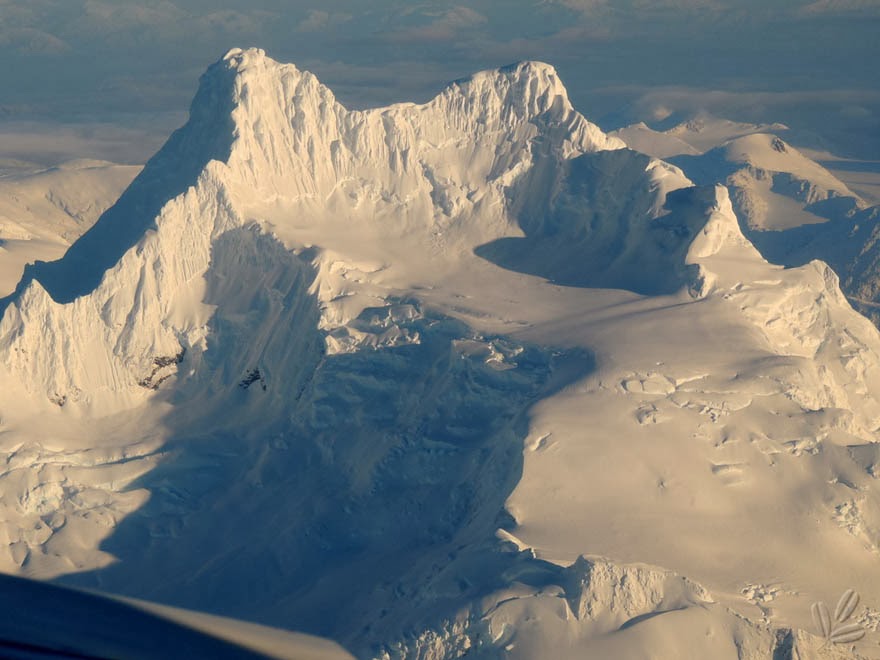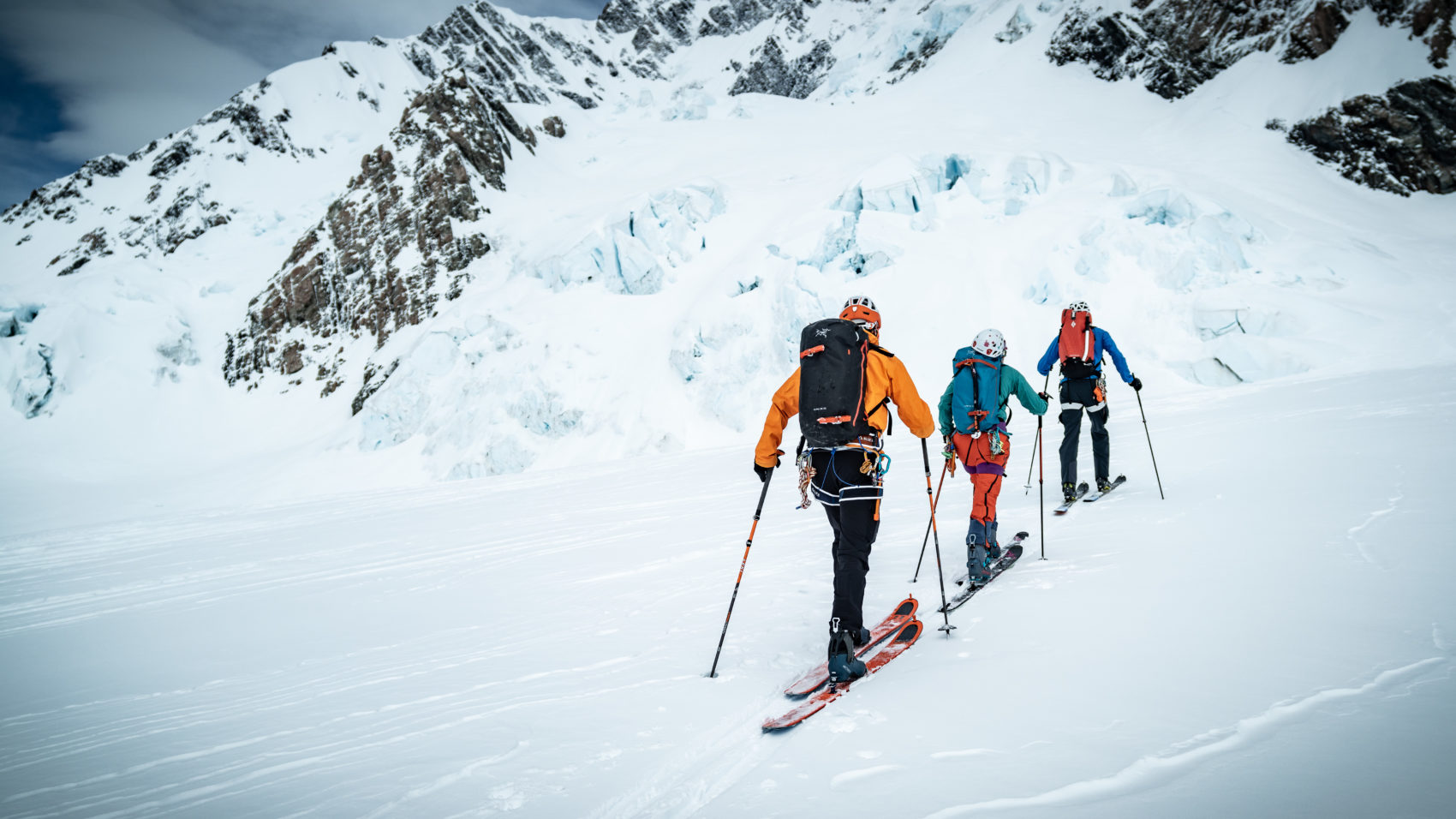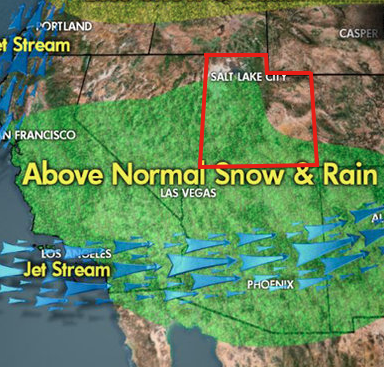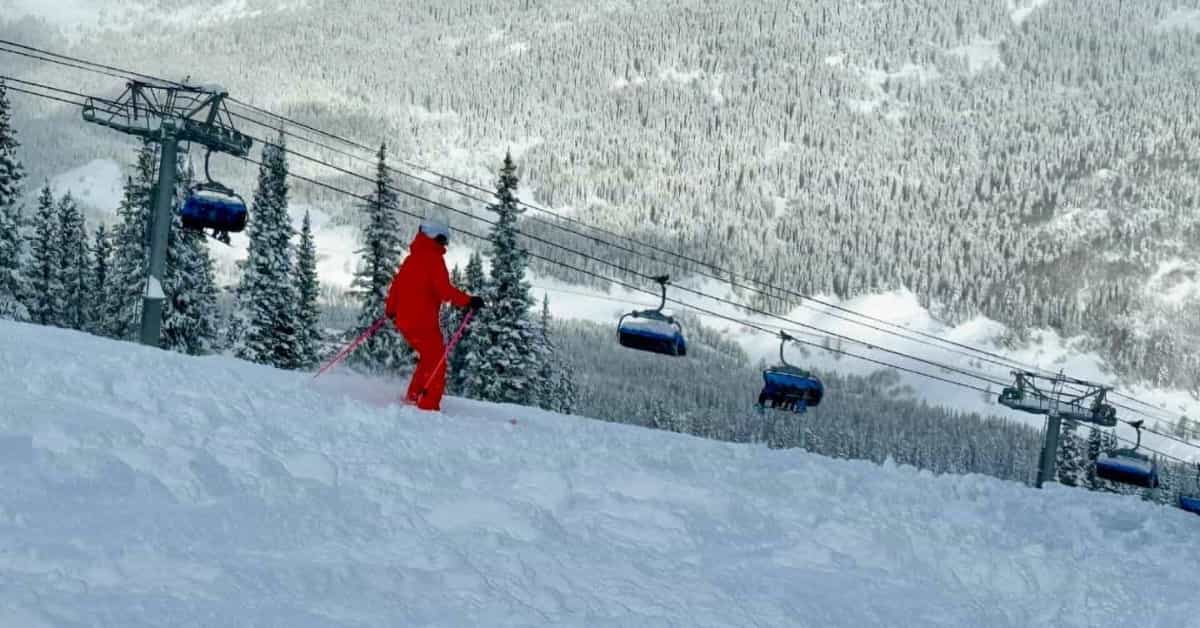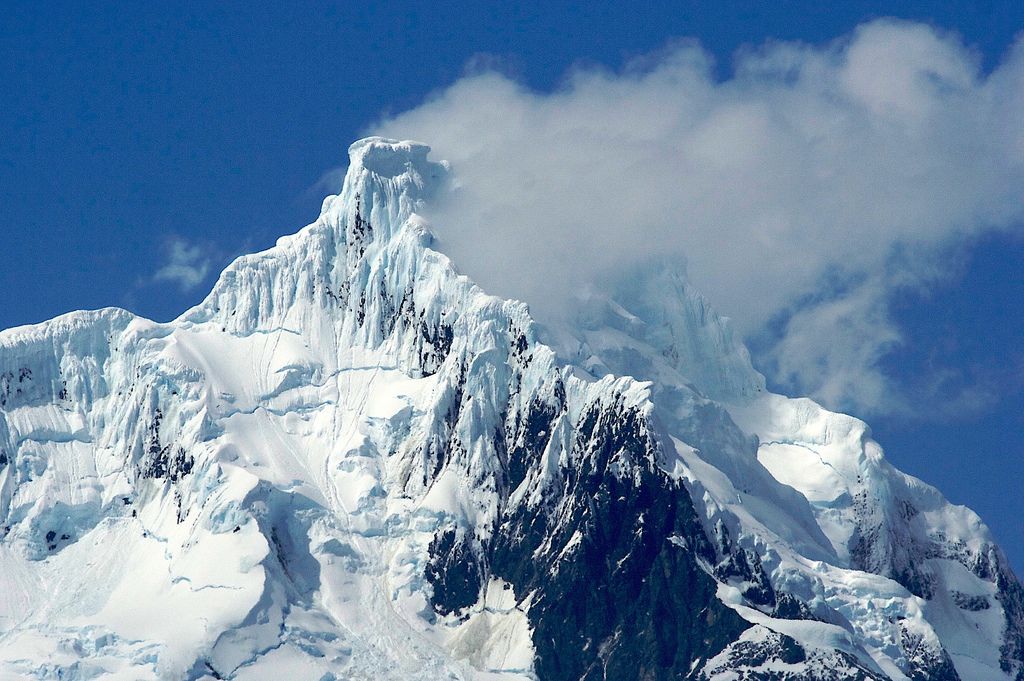
Mount Sarmiento: an ice Everest in the southernmost part of Patagonia. “The King of Tierra del Fuego” has been the desire of great explorers and mountaineers for more than a hundred years. Full of history and adventure, it represents one of the greatest challenges that Patagonia can offer.
The imposing iceberg rises abruptly from the Eastern-Shore of the Canal Magdalena and marks the western border of the Cordillera Darwin. Mount Sarmiento is located in the Alberto de Agostini National Park, in the Chilean part of Tierra del Fuego. It owes its name to the Spanish conqueror Pedro Sarmiento de Gamboa, and is, without a doubt, the most outstanding mountain in that territory.
Charles Darwin called Mount Sarmiento “the most sublime spectacle of Tierra del Fuego”. Beautiful phrases rest among the hidden fjord of a giant pyramid protected by the Magellanic tundra that once were accompanied by giants indigenous. The mountain became part of the mystique of Patagonia, an omnipresent axis in each adventure in these tempestuous regions.
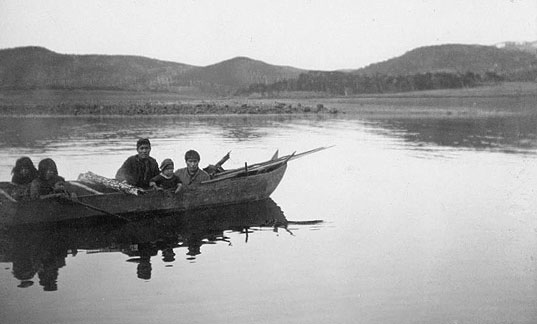
Sarmiento swore to comply with the Viceroy’s instructions, which were to carefully explore the channels of Patagonia and the Strait of Magellan. The orders were delivered with the aim of capturing Francis Drake, the famous English corsair who was wanted by the Spanish crown.
Despite his failure to capture the corsair, he started the most epic episode in the southern lands, discovering what we know now as Mount Sarmiento. His narrations speak of a “high snowy volcano” that appeared between large clouds. But the subsequent discovery of Fitz Roy and Charles Darwin led to confirm that it was not a volcano, but a Mount, which was named Sarmiento in honor of its discoverer.
These southern lands were inhabited by the Yaghan, an indigent people dedicated to fishing. They sailed free across the Beagle Channel north of the Brecknock Peninsula and south of Cape Horn in 16-feet-long canoes made from the bark of Coigüe. However, the English and Spanish expansion lead to the extinction of the original peoples of the southern lands.
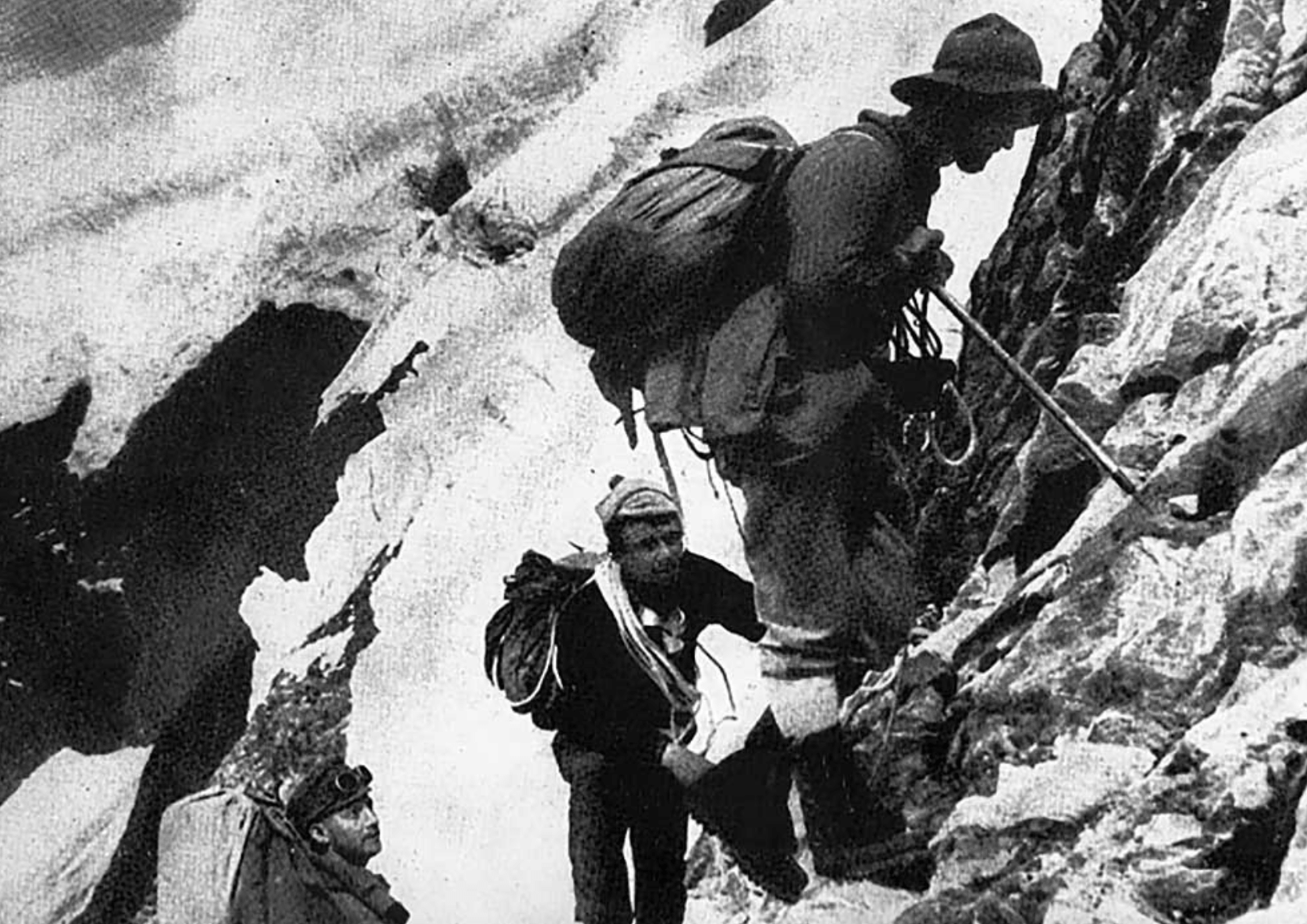
The sentiments inspired by Mount Sarmiento to the early explorers often had, in his own words, “a hint of terror and dread“. But in 1882 the time came for the fear was overcome by the desire to reach the summit, with Doménco Lovisato taking the first step. However, without success, he would start a centuries-old adventure around this magical mountain.
It wasn’t long before the tireless explorer of Patagonia, Alberto Maria de Agostini, entered the scene. De Agostini lived as a missionary in Tierra del Fuego and Patagonia, between Chile and Argentina, where he was the first person to reach several mountain peaks, glaciers, and sea sounds.
De Agostini, who was spellbound by the figure of Mount Sarmiento, tried to rise the summit twice between 1913 and 1914. Without giving up and at the age of 73, he returned in 1956 leading the best team of Italian mountaineers of the time. After almost two months of unsuccessful attempts, they made a daring alpine climb, starring Clemente Maffei and Carlo Mauri, who in the midst of fog and wind finally crown the mythical mountain on March 7th.
Since then many have followed these steps, but it took 57 years for Mount Sarmiento to allow new visitors at its summit.
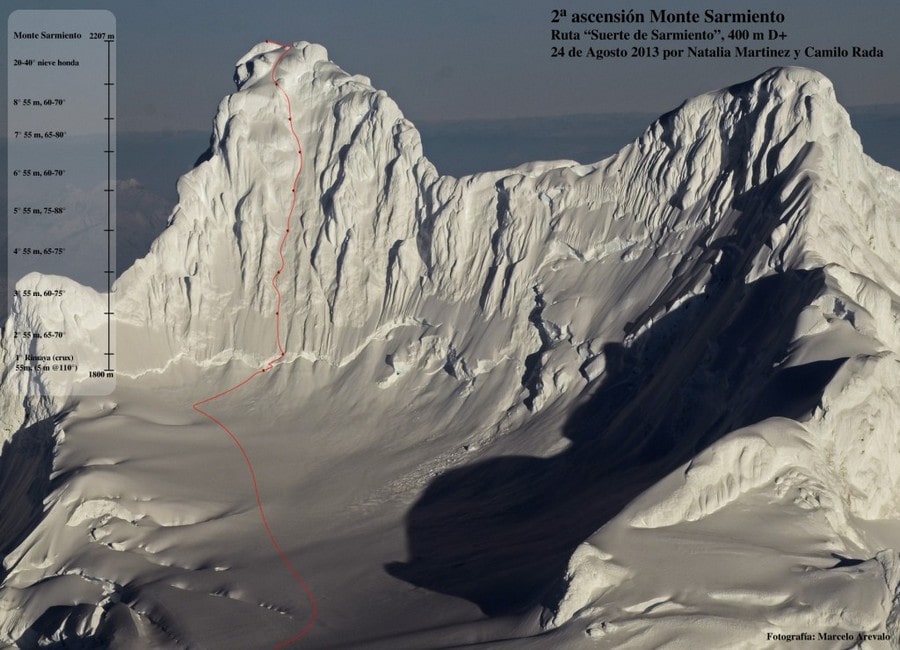
More than twenty expeditions have tried to reach the summit of Mount Sarmiento without success, suffering mostly from inclement weather of Patagonia. However, the time has come to write a news story about the Sarmiento summit.
57 Years after the first ascent, the Chilean Camilo Rada and the Argentine Natalia Martínez managed to reach the main summit of Mount Sarmiento in 2013, also achieving the first winter summit. This team of South Americans relived the history of many alpinists who attempted this little Everest in Patagonia, closing a cycle of prejudice and defeat.
Although two teams have been at the summit, none have been able to see the show that the top of Mount Sarmiento delivers. The Italian team in the ’56 when they were reaching the top a giant cloud covered the entire summit of the Mount, making it impossible to see something. On the other hand, the Chilean-Argentine team managed to ascend to the top of the Sarmiento at dawn, so dark Patagonia didn’t allow them to see the landscape that the Sarmiento summit had to offer.
The adventure remains at Mount Sarmiento. The fact that nobody has been able to enjoy the view that the mountain offers in its entirety keep the Sarmiento as one of the greatest adventures of Tierra del Fuego for all mountaineers around the world.
